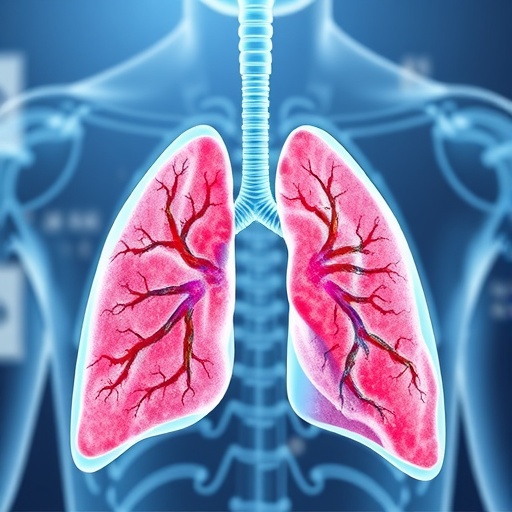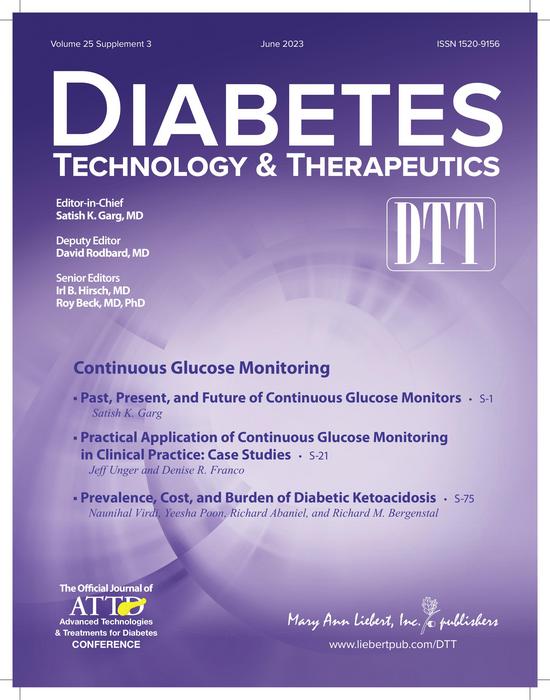Mitochondrial diseases have long captivated scientists and clinicians, not only because of their complex manifestations in essential organs but also because of the daunting challenges in establishing faithful animal models. Mitochondria, with their characteristic 16-kilobase circular genomes that typically exist in multiple copies per cell, encode key proteins in oxidative phosphorylation, as well as crucial tRNAs and rRNAs. Point mutations in the mitochondrial genome are at the heart of many inherited metabolic conditions, including Leigh syndrome and Leber’s hereditary optic neuropathy (LHON). These pathologies can manifest early in life or in adulthood, often affecting the heart, eyes, and nervous system. The scarcity of suitable research models has impeded both mechanistic insight and therapeutic progress. Traditional methods of generating mouse models of mitochondrial disease relied on complex chemical induction, random mutagenesis, and partial manipulations that often failed to yield precise point mutations. Consequently, researchers explored gene-editing tools like transcription activator-like effector nucleases (TALENs) and zinc-finger nucleases (ZFNs) to manipulate mitochondrial DNA (mtDNA). Although these approaches allowed for certain targeted modifications, the dream of executing single-base edits in the mitochondrial genome with high precision remained out of reach for many years.
The next-generation variant, termed mitoBEs v2, arose from the thorough redesign of adenine and cytosine deaminases to mitigate unwanted off-target edits. When expressed in cells, the original versions of these mitochondrial base editors were shown to cause occasional undesired edits in the mitochondrial genome and, more significantly, in transcripts, because certain cytosine and adenine deaminases can inadvertently bind and deaminate RNA. This risk becomes more pronounced when the editors are delivered in the form of mRNA, which yields higher expression levels and correspondingly higher on-target editing but also riskier interactions with off-target substrates. By strategically mutating and screening key residues within TadA, a bacterial adenine deaminase commonly used for adenine base editing, the new version of mitoABE included the substitution V28F in TadA8e-V106W, leading to substantially improved specificity and reduced RNA off-target edits. In parallel, our team explored a library of cytosine deaminases for an alternative to APOBEC1—the widely used but often promiscuous deaminase—ultimately selecting CBE6d, a TadA-derived cytosine deaminase that delivered a higher degree of efficiency and a narrower editing window.
Having validated mitoBEs v2 in cultured cells, we systematically screened 70 pathogenic point mutations in the mouse mitochondrial genome that mirror known human mutations. Among these, we found 68 to be editable by mitoBEs v2, indicating that the modified editors maintain broad applicability for disease modeling. The editing efficiency often exceeded 10%, and in some loci, including mt-Rnr1 A978G, mt-TrnV G1029A, mt-Atp6 T8576C, mt-Atp6 T8591C, mt-Nd5 T12499C, and mt-Nd5 A12784G, we observed rates of up to 20–25% in cultured neuroblastoma cells. While such cell-line testing provides only an initial screening for the feasibility of each target site, it also reveals the interplay between TALE binding, deaminase activity, and the architecture of the target sequence in shaping how effectively any given site can be mutated.
The next challenge was to translate this high efficiency to live animals, where editing has to happen at the zygote stage so that every cell in the adult mouse carries the mtDNA change, making it possible to recapitulate human disease phenotypes. We chose two specific positions for in vivo proof-of-concept studies: mt-Atp6 T8591C, corresponding to the human m.T9191C mutation implicated in Leigh syndrome, and mt-Nd5 A12784G, mirroring the human m.A13379G mutation implicated in LHON. When we delivered mRNA or circRNA encoding the new mitoBEs v2 into one-cell mouse embryos, the editing efficiencies reached unprecedented levels. Notably, circRNA-encoded mitoBEs v2 proved more effective than mRNA-encoded versions, often doubling the mutation rates. In some embryos, we attained editing efficiency upward of 60% at T8591C or 62% at A12784G when analyzed at the blastocyst stage. Extending this success to live offspring, many F0 mice carried mutation loads of 40–50% or even up to 82% at their respective loci, underscoring the ability of mitoBEs v2 to create highly heteroplasmic or near-homoplasmic conditions.
This level of editing in F0 mice is particularly important for studying mitochondrial disorders because disease phenotypes often manifest only when the proportion of mutated mtDNA surpasses a threshold. In LHON, for instance, the typical threshold is around 60% for the mutant mtDNA to induce the visual impairments commonly observed in patients, though lower loads can sometimes be sufficient. By generating mice in which the majority of their mtDNA is mutated, we produce more faithful analogs of human disease states, facilitating a clearer understanding of pathological mechanisms and the development of treatments. Importantly, we verified the specificity of these edits. Whole-genome sequencing revealed no significant off-target editing within the nuclear genome at relevant sequencing depths, and a thorough survey of potential off-target sites, including computational predictions with TALENoffer, showed the background to be effectively clean. Even in the mitochondrial genome, where the original version of mitoCBEs occasionally introduced off-target conversions, the new cytosine deaminase variant CBE6d displayed minimal detectable bystander or off-target edits.
One of the most intriguing discoveries about these newly engineered mice was the extent to which the mutations were stably propagated across various somatic tissues and over time. By sampling 26 tissues at 2 months of age in two different F0 mice, we saw that editing levels remained relatively stable in many tissues. Some variations were detected, which could be due to the interplay between environmental factors, tissue-specific energetic demands, and potential selective pressures on certain mtDNA variants. Indeed, such tissue-specific segregation is part of the broader story of the mitochondrial genetic bottleneck, wherein different subpopulations of mtDNA can get amplified or suppressed depending on energetic or developmental constraints.
The question of heritability was addressed by mating female mice carrying the edited mtDNA with wild-type males. mtDNA is well known to be maternally inherited in mammals. We observed that mutation loads fluctuated in F1 and F2 generations, sometimes increasing, sometimes decreasing, a classic manifestation of the mitochondrial bottleneck effect. Remarkably, some F1 offspring attained 100% mutation load at the A12784G site, showcasing the potential to generate fully homoplasmic lines within just one generation. In contrast, the T8591C variants seemed detrimental to embryonic development or gamete maturation, as illustrated by lower birth rates in those lines and a gradual diminution of the T8591C mutation over subsequent generations. By the F2 or F3 generation, T8591C either was substantially reduced or disappeared in most offspring, pointing to a powerful selective force that eliminates highly deleterious mtDNA variants.
Phenotypic characterization of the F0 mice revealed disease-relevant symptoms that mirror clinical data in humans. Mice with high editing levels at T8591C in mt-Atp6 had significantly reduced heart rates and a notably diminished left ventricular ejection fraction as assessed by echocardiography. Leigh syndrome is often associated with severe cardiovascular and neurological abnormalities. The phenotypic data in these mice strengthen the link between that particular point mutation and the observed phenotype, consistent with human clinical observations that T9191C can lead to Leigh syndrome with pronounced cardiac manifestations. Similarly, the mice carrying the A12784G mutation in mt-Nd5 displayed impaired visual function evidenced by electroretinography. Under dark-adapted conditions, both a-wave and b-wave responses were suppressed in these animals, and under light-adaptation conditions, the b-wave responses were notably depressed. LHON in humans is characterized by central vision loss, optic atrophy, and deficits in the photoreceptor signals, which aligns with these findings. By recapitulating such phenotypes, these new mouse lines represent crucial platforms for future interventions, drug testing, and mechanistic analyses of mitochondrial diseases.
Despite these accomplishments, a challenge remains in achieving truly single-base alterations without introducing secondary edits in the adjacent window. Because TALE-based editors typically incorporate a small window in which deamination can occur, multiple bases within that window can be converted if the sequence context permits. While the presence of bystander mutations is tolerable in certain therapeutic contexts, disease modeling demands the highest precision to unambiguously link genotype to phenotype. In the present study, we addressed this by shifting the TALE-binding sites in the mt-Nd5 A12784G system, effectively narrowing the potential editing window so that only the base at position 12784 is selectively edited. Indeed, some screening in cell lines identified pairs of TALE monomers that yield cleaner edits, and embryo injections of these improved pairs gave rise to F0 mice whose only edit was at the target site. Phenotypic tests using electroretinography on these single-mutation mice confirmed that even in the absence of neighboring bystander mutations, the A12784G change was sufficient to cause LHON-like visual defects. Therefore, rational design of TALE binding, coupled with the improved catalytic specificity of deaminases, can yield nearly perfect single-base mitochondrial edits.
The success of mitoBEs v2 in generating robust mouse models of disease points the way to further possibilities in therapeutic development. Gene therapy approaches using adeno-associated virus or lipid-based nanoparticle systems could, in principle, deliver these editors to adult tissues. However, the inefficiency of delivering proteins or RNAs specifically to mitochondria in vivo remains a formidable obstacle. The impetus to solve such challenges is growing, given that more than 90 disease-related point mutations in human mtDNA have been identified. Of these, around 85 are theoretically addressable by some form of base editor that converts A-to-G or C-to-T. Although the present study focuses on using mitoBEs v2 to produce heritable changes in mouse zygotes, one can envision analogous methods, refined delivery vehicles, or direct in vivo injections that eventually correct pathogenic variants in patients.
Moreover, the principle of generating clean backgrounds for disease modeling fosters confidence that the observed phenotypes reflect the intended single mutation or cluster of mutations, rather than confounding off-target effects in the nuclear genome. As we scaled from single-blastocyst analyses to whole-litter screens and then entire F0 and F1 cohorts, we saw no evidence of spurious large-scale nuclear edits or integration events, which historically have bedeviled certain gene-editing tools. This is crucial not only for basic science but also for any translational endeavor where specificity is key to meeting regulatory standards for safety.
Another intriguing aspect of the new mitochondrially targeted editors is their compatibility with circular RNA (circRNA). CircRNA vectors are more stable than linear mRNAs, conferring prolonged expression. This was reflected in the heightened editing efficiencies in mouse embryos injected with circRNA constructs, where sustained editor expression presumably facilitated more comprehensive editing of mtDNA. The successful translation of circRNA in mitochondria-targeted editing underscores the broader potential of circular RNA technologies across various domains of gene therapy, from disease modeling in preclinical species to future therapeutic interventions in humans.
Subject of Research: Mitochondrial genome base editing to create mouse models of human mitochondrial diseases
Article Title : Precise modelling of mitochondrial diseases using optimized mitoBEs
News Publication Date : 22 January 2025
Keywords : Mitochondrial diseases, base editing, mitoBEs v2, genome editing, animal models, TALE-fused deaminases, off-target effects, maternal inheritance, disease phenotypes, Leigh syndrome, LHON, circRNA technology
Tags: araştırma modeli zorluklarıgen düzenleme araçlarıgen düzenleme teknikleriLeber’in kalıtsal optik nöropatisiLeigh sendromu tedavisimitokondrial DNA manipülasyonumitokondrial hastalıklarmitokondrial hastalıkların etkilerimitokondrial model geliştirmeoksidatif fosforiltemel mutasyonlar ve tedaviyüksek hassasiyetli gen düzenleme






